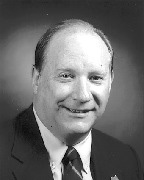As the economy continues to sputter in to 2009, there is even more need for regional collaboration in northern section of southeastern Mass. Bridgewater State College, under the auspices of their Institute for Regional Development, recently hosted a group of economic development practitioners and other stakeholders at the Moakley Technology Center to name the mutually beneficial regional alliance they have been organizing.
Situated in the fastest growing region in the Commonwealth, the cities and towns on the northern segment of Rt. 24 and the southernmost part of I-495 anchor a burgeoning regional economy with the potential to expand and attract more businesses and create even more jobs.
A regional demographic summary currently being updated for the 20 proposed communities noted the value in numbers of the effort to create a regional entity focused on economic development. This focus might take the form, for example, of sharing technical resources, lending expertise, exchanging ideas, co-operative marketing, and collaboration on infrastructure, transportation, and other regional issues.
As originally reported the new region has a growing population of 515,776 (2000 census); 195,646 housing units; a workforce of 286,577 with 5.2% unemployment; 36 industrial/office parks; 17 colleges/universities; 10 hospitals; high school graduation rates of 84.5%.The top employment sectors are retail trade, manufacturing, health care/social assistance, and accommodation and food services. This will be refined with 2009 statistics.
The group continues to be enthusiastic about the new region and voted to adopt the name "Old Colony Crossroads Collaborative" and to participate in an organizational survey to identify any additional stakeholders, define the new organization's mission, develop a work plan and seek recognition and membership as a region by state programs and agencies. They are also planning a spring meeting to engage state and regional legislative leaders in the collaborative. Old Colony was chosen because of its historic significance, its connection to the Old Colony Planning Council, Old Colony Commuter Rail, Old Colony Historical Society, and other similar agencies and organizations through the region. Crossroads was added to recognize the region's superior transportation system between Rt. 24, I-495, and Rt. 44 east especially. A collaborative organization model was selected to encourage communities in the region to lose their parochial individual nature and work together to improve the region as a whole.
As the economy rebounds, the members feel this regional approach will bring new awareness to companies seeking available space and building opportunities in the Old Colony Crossroads Collaborative areas.
Adapted and updated from a press release issued from the Institute for Regional Development at Bridgewater State College.
Richard Shafer is the economic and industrial development director for the city of Taunton's office of Economic and Community Development and the chairman of SRPEDD's regional economic strategies committee.
For well capitalized banks and trusts with an appetite for growth, this is a buyer's marketLet's face it, the fourth quarter was a pig, and there's no way to put lipstick on it. To survive (in the Darwinian context), banks and portfolio lenders had (and continue) to reassess risk and conform to a market where volatility is the only constant; therefore, balance sheets had to be cleaned up, toxic assets liquidated or marked to market, and capital ratios bolstered.
For the most part, portfolio lenders were sidelined this past quarter. Three factors were central to this slowdown: First, the fourth quarter is a historic offseason for life companies; second, new premiums took a hit in 2008; and third, spreads on alternative investments were at historically wide levels.
Volatile pricing benchmarks, such as corporate bond spreads, made it difficult to lock rates throughout 2008 but portfolio lending slowed in the fourth quarter because real estate allocations were either depleted or frozen by credit officers prior to year-end. This is consistent with previous years but declining premiums may extend the slowdown. LIMRA reported new premiums for individual life insurance dropped 12% year-over-year in the third quarter. This snapped seven consecutive years of growth. A confluence of fallout from the credit crisis and the inverse scenario of soaring claims against declining premiums will require insurers to preserve capital in a manner that does not jeopardize creditworthiness or shareholder equity.
Life companies will also be making relative value decisions that could divert capital to higher-yielding alternative investments, such as CMBS and discounted note purchases. Of the capital allocated to commercial real estate, a large percentage will likely be kept in-house to focus on rollovers within existing portfolios. The bottom line: Fiscal Year 2009 real estate allocations may be in the crosshairs. As a result, most originators still await their marching orders.
Despite the headwinds, life insurers will enter the year in a position of strength. They will cherry pick low leverage, no risk deals. Larger transactions of $35 million and up will probably need to be bulletproof in order to stand a chance. Pricing will continue to adjust with the market, but approximate spreads of 425 to 500 basis points over comparable term treasuries will be typical. Portfolio lenders do not want to take on a lot of risk and will need to get paid well to do so. On a positive note, many insurers have eased prepayment penalties and/or begun negotiating discounted note sales to recycle capital and clean up balance sheets, thus allowing borrowers to retire loans early at par or even sub-par values.
Notwithstanding an isolated run on deposits that began in October and presaged a year-end, market-wide flight to safety, Massachusetts-based small to mid-sized banks continued to lend during the fourth quarter as the volume of withdrawals was not acute enough to constrain lending capacity. However, banks and trusts reliant on deposits to fund originations are now paying competitive rates to bring these deposits back. Expect rates on whole loans to reflect the widening cost of capital that has occurred.
Also impacting rates on new loans, safe haven buying pushed yields on US Treasuries to historic lows as investors prettied up balance sheets with the safest and most liquid assets prior to year-end reporting. This resulted in a flattened yield curve as inflation was effectively priced out of the US bond market. Most banks are already considering interest rate floors and a sustained rally in the Treasuries market may force their hand.
The credit crisis has prompted a return to basics and this will be a plain-vanilla year. Underwriters will look at least twelve months forward for rollover risk and will use higher market vacancies and market-rate management fees (regardless of self-management) in their analysis. Banks are also beginning to ratchet down maximum loan amounts in order to originate more, smaller deals and spread the risk.
With conduit programs sidelined for the foreseeable future, banks inherit a feast or famine scenario. The new year will bring increased deal flow but the lack of a take-out market for maturing loans will likely require originators to conserve capital for redeployment within their existing portfolios. Looking forward, banks can be expected to take advantage of the down market to bring in new business and increase their market share. For well capitalized banks and trusts with an appetite for growth, this is a buyer's market, as local and regional players hit hard by the credit crisis can now be acquired for pennies on the dollar.
Mervyn King, governor of the Bank of England, may have summed up the credit crisis best in his October speech to the CBI Institute of Directors: "I have said that successful monetary policy would appear rather boring ... The past few weeks have been somewhat too exciting ... So let me extend an invitation to the banking industry to join me in promoting the idea that a little more boredom would be no bad thing. The long march to boredom and stability starts tonight." Never has boring sounded so exciting.
Jeff Black is a loan analyst with Colliers Meredith & Grew, Boston, Mass.
Tags:
The Old Colony Crossroads Collaborative: An economic development plan for S.E. Mass.
January 28, 2009 - Spotlights









